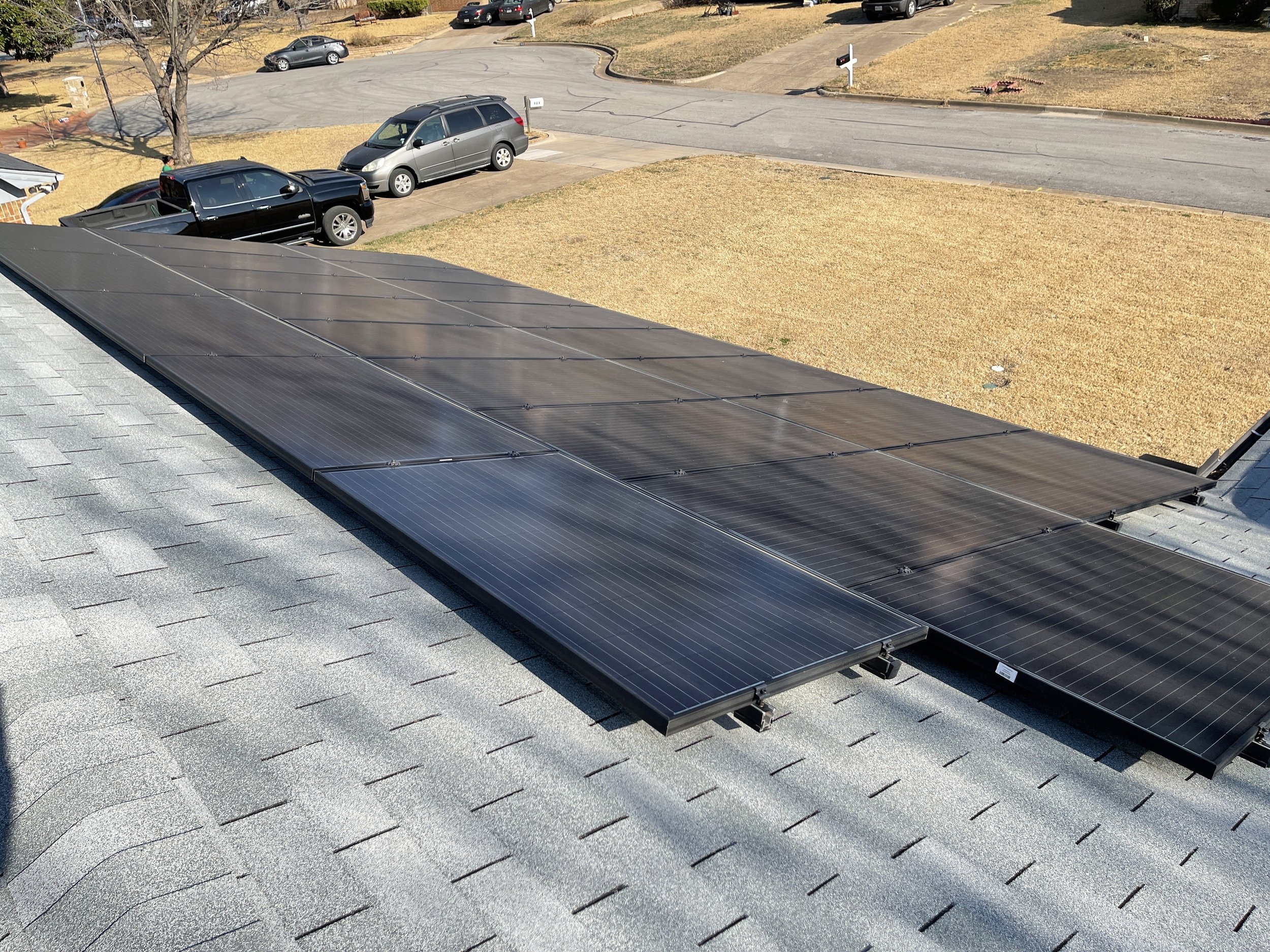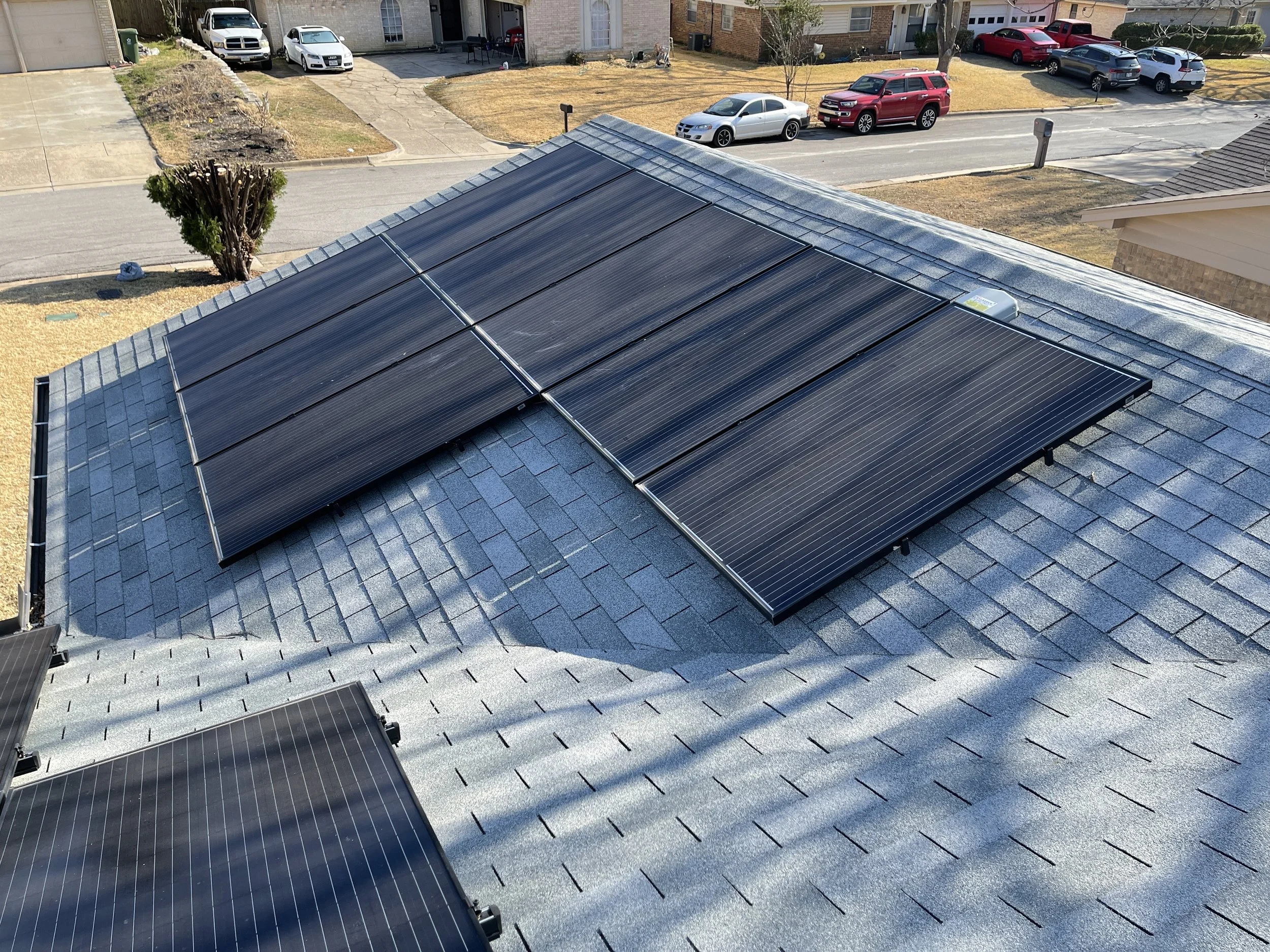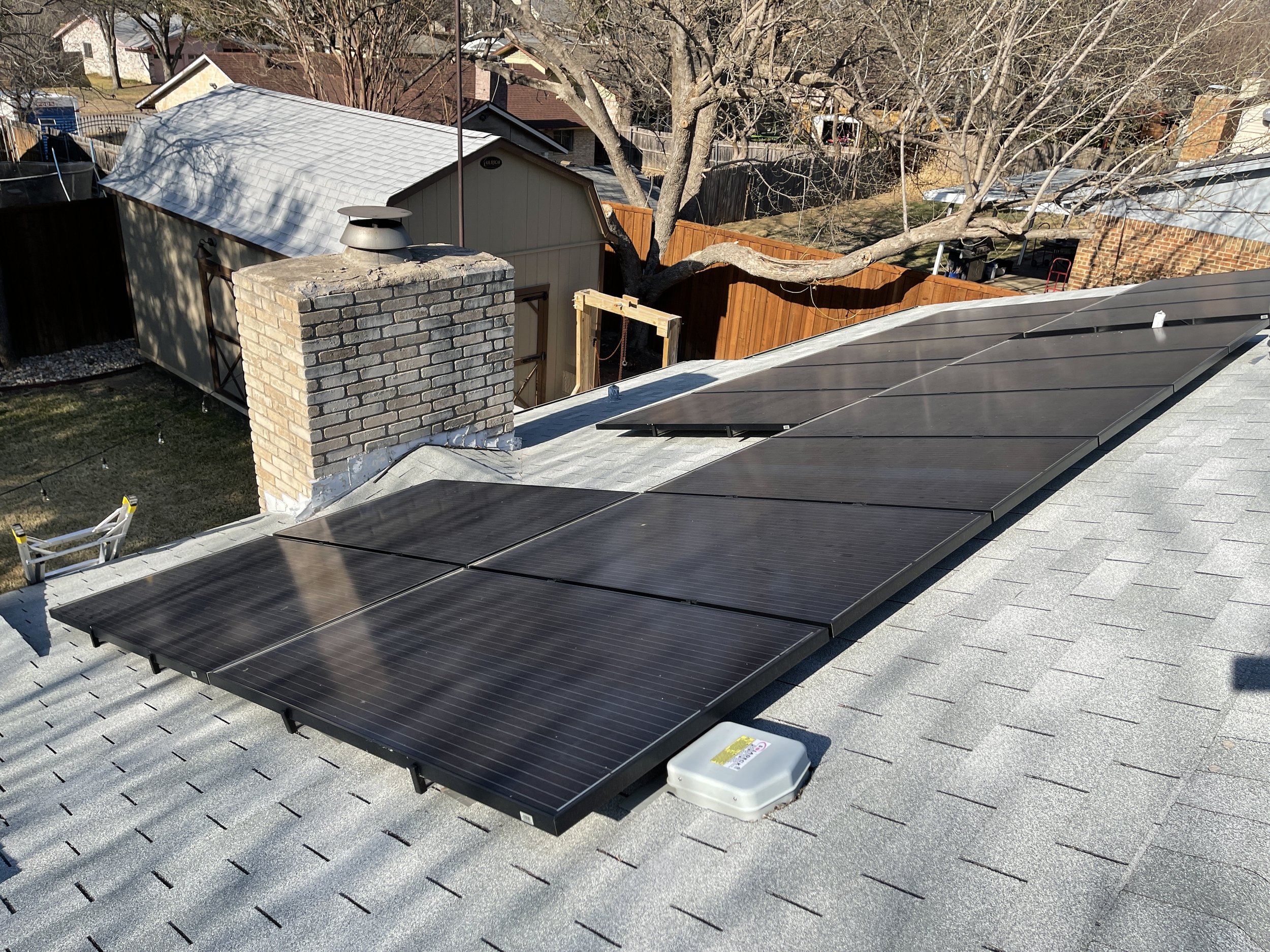The Current Solar Setup
As I write this, I have 46 solar panels on the roof, I no longer pay an electric bill, and I recently placed the down payment on a battery system. When complete, I will be able to maintain power even if there is a power failure (typically due to weather) in the area. That may seem like a given, but in an urban setting that isn’t always the case.
I get asked about my solar setup when I mention I have one, usually questions about advice on moving forward with a purchase. Before I explain too much, I should probably explain how I got here, and I’ll also try to note which things are unique to my particular system and even to this region. Solar power is not regulated the same from state-to-state here in the USA, in fact there are county laws and even city laws that could potentially impact one’s choices. Besides, this will also answer a few common questions I get.
Getting to Solar
My family and I moved to Arlington, Texas in 1992. Texas is unique that it pretty much has its own power grid. As an energy state, Texas has huge natural gas reserves, it is in the top ten nuclear power producing states, and due to Texas-based oil as well as foreign imports (via the Gulf of Mexico) gasoline at the pump is cheaper here than most of the rest of the country. However, a full twenty percent of the power generated by Texas electric producers is from wind, so Texas is actually a leader in the green energy movement. The grid is managed by ERCOT, and the grid operator that services our area is Oncor. At this time there were maybe a dozen power companies (more now) servicing the Arlington area with no less than four major and established companies I could choose from for electricity. The company I currently use is called Green Mountain Energy, and all of the power they put on the Texas grid is from renewable resources - 95% wind, 5% solar.
As we never “housed up” like so many others during did during the dot com boom, we simply doubled up on house payments and managed to pay off the mortgage early on our working-class-neighborhood home. We pushed to live “lean and green” in that we wanted to reduce our debt as much as our carbon footprint.
After setting up a weather station to monitor wind speeds and learning that we didn’t meet the local code compliance levels for even the smallest wind turbines to be installed, we focused in on solar, eventually getting a 22-panel system from local provider Kosmos Solar in 2017. The panels were 300 watt Mission Solar for a total of 6.6Kw. The panels were wired in pairs with micro-inverters, and Oncor came out and installed an updated meter. After city inspections, it went live in April of 2017.
We paid roughly $20k for that system, and as we’d been saving up money for it for a while, we paid for it outright. However a couple of things helped offset the price. The first thing was that Oncor, our grid provider, was offering rebates on solar purchases of 25% of the price, and this was applied to the bill of sale. Secondly, there was a tax credit one could take, and this resulted in 26% of the full price coming off the federal tax we owed. So instead of $20k it worked out to $10k, and we cut our electric bill substantially. This meant we’d have the thing paid for in a few years.
Green Mountain was buying back our excess energy which we’d get during the height of summer, as our system was putting excess energy onto the grid during those hot and sunny days. So the next step was to purchase more panels. We started saving again, and my then-employer Duo Security was acquired by Cisco so we had a bit of a financial windfall. My wife called the sales person we got the panels from before and he’d started his own solar company, so we got another 24 panels - this time 310 watt Mission Solar panels. The 24 panels were wired into a single inverter, and went live in August of 2019. It cost roughly the same as before but with no rebate from Oncor (but we did get another tax break). This brought the total system up to around 14Kw.
Up To Date
We’ve eliminated the electric bill entirely. As we’d been averaging our electric bill for a more predictable monthly budget for many years prior to installing any solar panels, with the new panels becoming operational in the height of summer we immediately started running a credit. Not a lot, but it was enough to offset the winter months and we’ve been maintaining a slowly-increasing credit ever since.
We had held off on batteries as there wasn’t a lot of choice and the cost wasn’t worth the performance. But now it is.
Odd Texas Rules
Believe it or not, it is illegal to go off grid in the city of Arlington. If you own a home in Arlington, it has to be wired to the grid. You can still just not pay the bill and be without power, but you can’t pull the plug (technically the meter). As a result of this and other statewide regulations, if the power is out in your neighborhood then your solar panels cannot be putting energy on the grid. While that might seem counter-intuitive, there are a couple of reasons for this.
First and foremost there is a safety issue. If the power is out in the area and technicians are working on fixing it, they are using tools and even potentially their hands to handle equipment on wires they expect to have no electricity. Those panels putting power on the grid could seriously injure or kill someone.
A secondary reason is the Texas grid itself. Remember, Texas has its own unique grid, and keeping it up and operational is its own challenge. The cycling of available power and demand has to be balanced between the power companies putting power on the grid and grid operators operating their sections of the grid - and if that balance is off drastic measures may be required to keep the whole system from crashing. This became readily apparent during the rolling blackouts in February of 2021. Grid operators like Oncor have to be able to control things, and during outages they don’t want power coming onto the grid unpredictably. Hence the requirement that if even a small section of the grid is down (like in your neighborhood after a storm), you’re not adding unpredictable and unexpected power to the power lines.
Next Steps
If you have a generator that can kick in if your grid power is down, it knows to not put power onto the grid and will cease generating power once grid power is restored. A battery system is the same, except instead of a fuel-powered generator to keep it charged up it can use solar panels - a free and non-polluting source of power.
Before my wife passed, we were planning on this next step with batteries. The dream was that if the power went out, we’d have heating, cooling, a working refrigerator and freezer, and one is all set - even for an extended period of time. As green-focused as my wife was, I know without a doubt I have to continue this journey as she would have wanted me to see this through. I don’t mean to get all heavy, but I want this home’s future in the hands of my family or even some other family who can enjoy free energy, knowing they are giving back to the planet instead of simply taking.
Next in this series will be tips on preparing your home and picking a vendor to purchase solar panels and batteries from, including why I’m going back to Kosmos Solar for the battery system.





